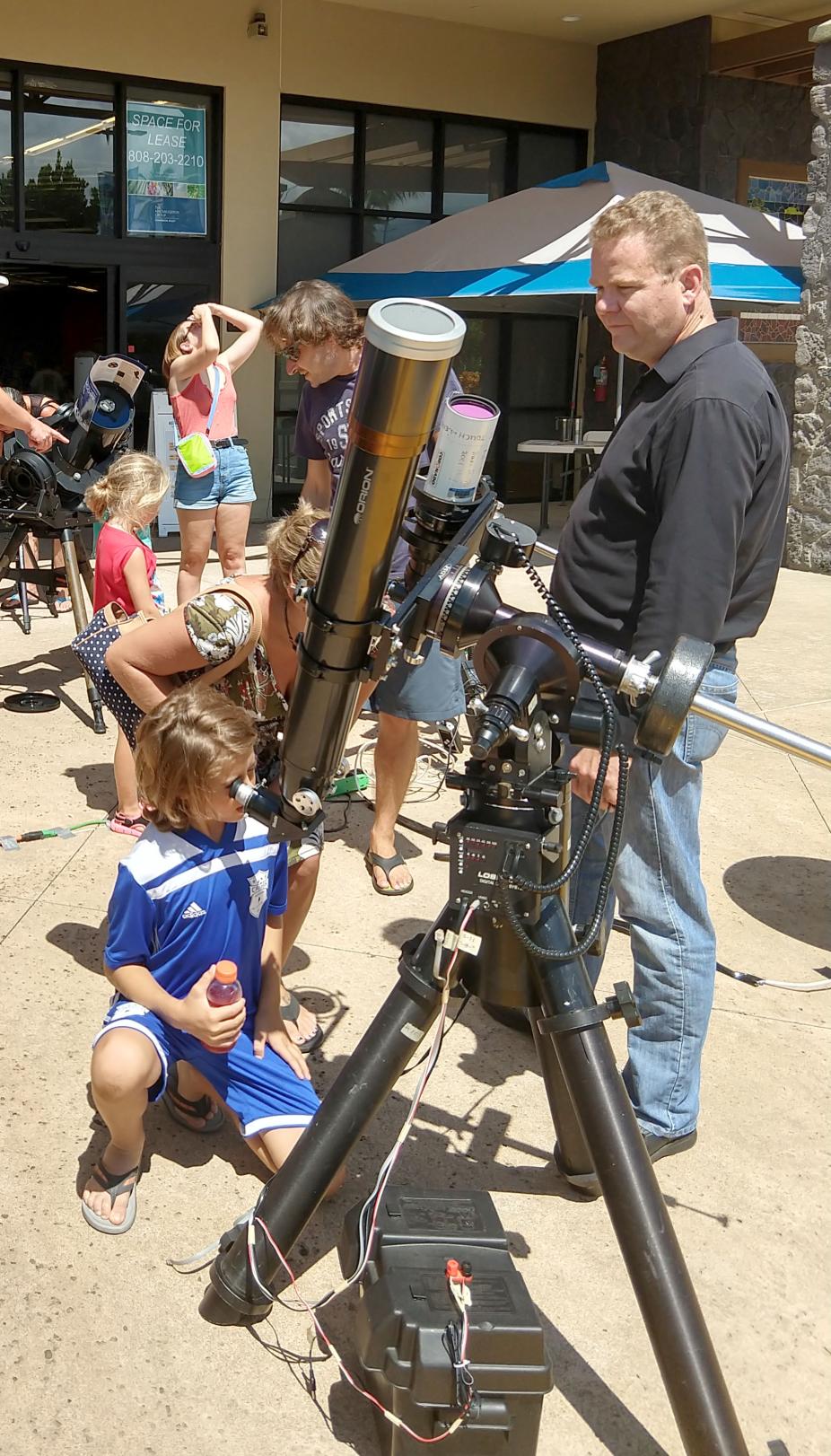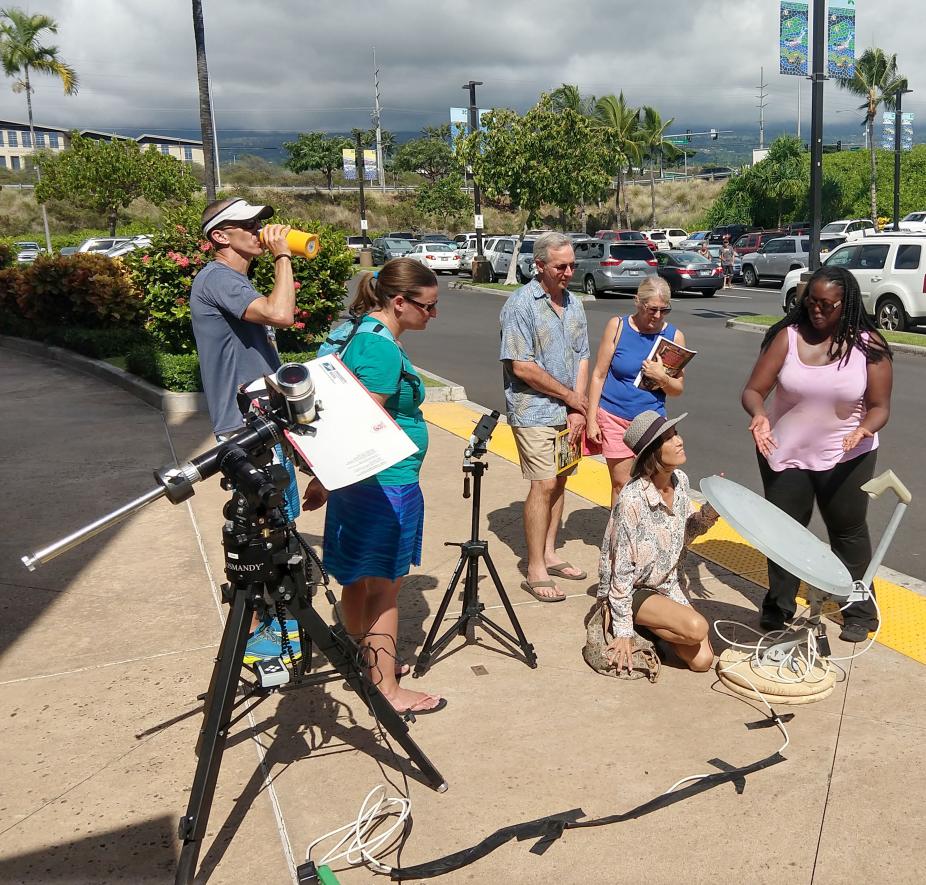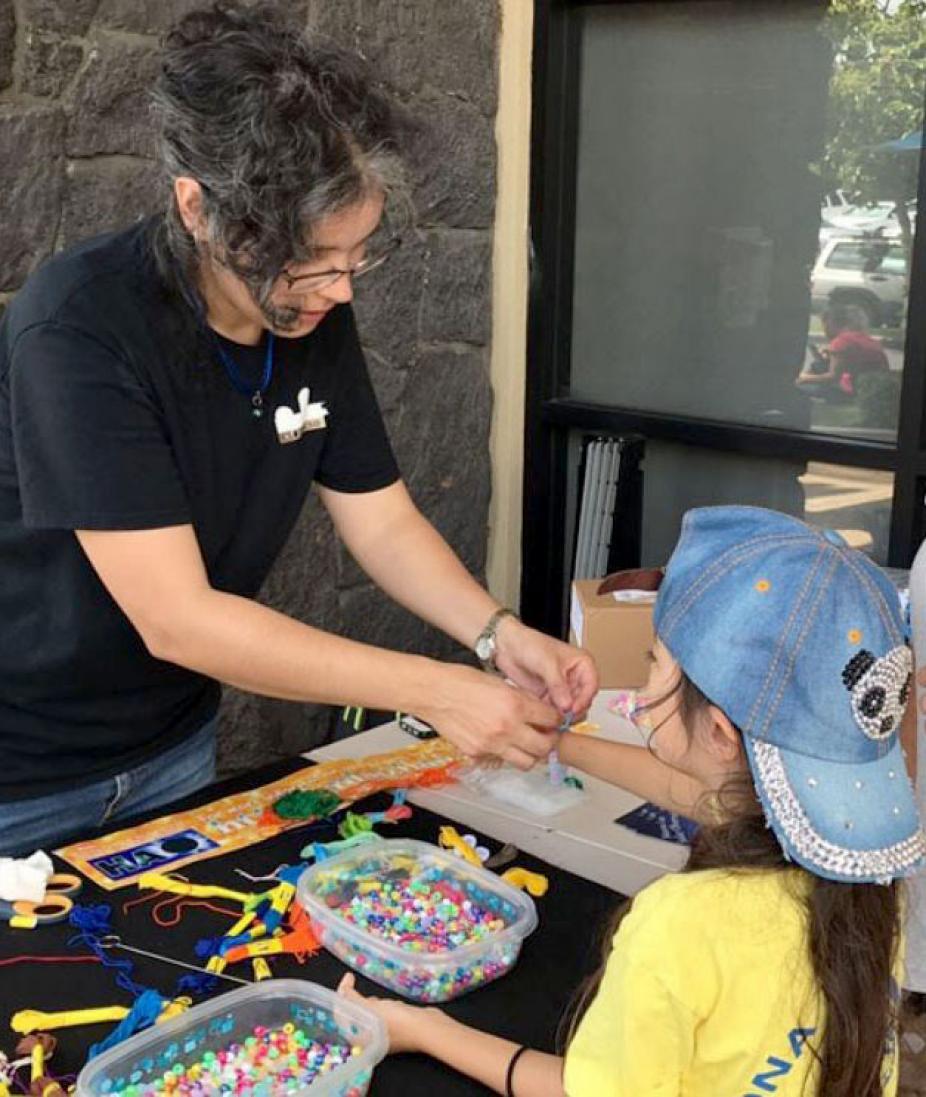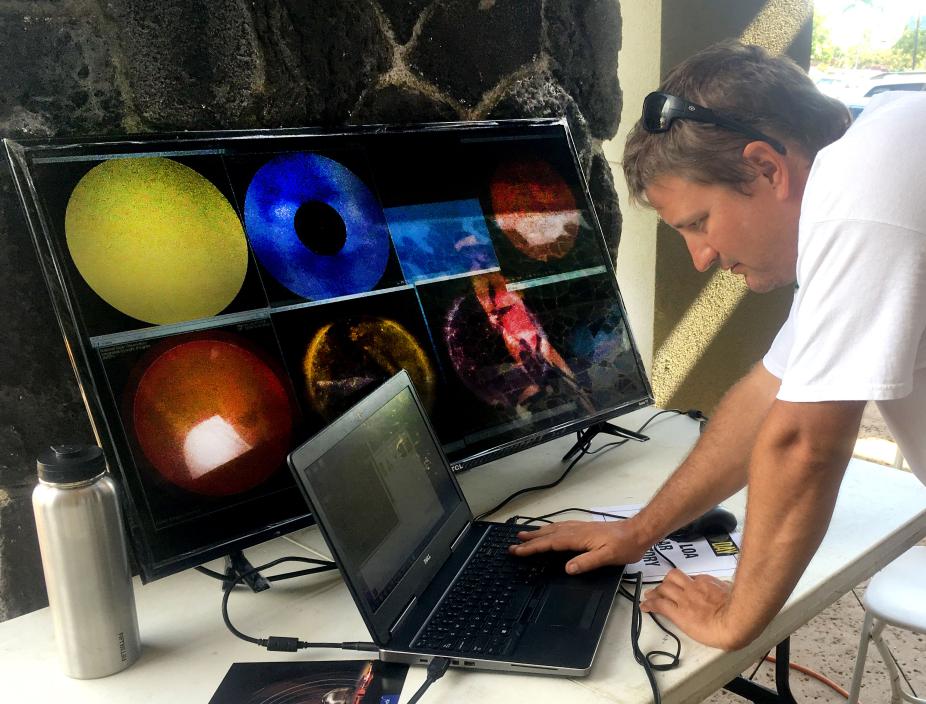On October 6th, the MLSO staff participated in AstroDay 2018, an educational outreach event coordinated by the Mauna Kea Observatories. 3,000 people attended. This was the second occurrence of this event, located in Kailua-Kona, on the west side of Hawaii Island. It featured booths and science displays from various local observatories, robotics clubs from numerous schools, and other tech-savvy groups.

Child safely viewing the sun through optical telescope.
Last year, MLSO had a booth featuring magnets, to demonstrate how magnetic fields dominate physical processes on the Sun, and explaining the observing instruments used to detect these solar magnetic fields. Our experience in 2017 was very positive, and our observer, Lisa Waters, was featured in the local paper.
So it was with excitement and anticipation that we approached this second event, AstroDay 2018. We settled on a theme of “the sun in many wavelengths.” We showed how direct observations of the Sun using solar telescopes compares with other types of observations, including polarized images, and ultraviolet images and movies made using instruments on orbiting satellites.

University student explaining the radio telescope experiment.
This year we teamed with college students from the University of Hawaii Astrophysics club. MLSO staff handled the movies and ultraviolet images, while the university students assisted the public with the use of the telescopes and explained what they were viewing. With the students, we built a radio telescope based on the “itty bitty radio telescope” project. The concept was to use a common device that is widely known to be associated with satellites and communication (a radio telescope) and show how the Sun also emits waves at radio wavelengths. A simple sensor produced an audio tone of different frequencies when a signal was detected. Children moved the dish back and forth until they could find the sun. For the more ambitious kids, we also had them try to find Jupiter, which was much harder during the daytime. Unfortunately, we had absolutely zero sunspots on AstroDay 2018 and only a few small prominences, but the university students helped everyone interested in seeing other solar phenomena.

Lisa Waters demonstrating UV beads.
In the MLSO booth, we tried to reinforce what people saw in the telescopes with a photosphere intensity demonstration and H-alpha movies. We demonstrated that even though the visible disk of the sun appears uneventful when viewing, the Solar Dynamics Observatory satellite and movies from the MLSO coronagraph capture some interesting processes in the solar corona. This lead to further discussion of how these processes lead to changes in the solar wind and geomagnetic storms on earth. For the younger booth visitors, we helped them make bracelets out of UV sensitive beads that changed color in the sunlight to explain how there is some light from the sun that we can’t see with our eyes, but still affect things here on earth.
Overall it was a fun and successful day of public outreach for MLSO. It was wonderful collaborating with the university students at building a solar/radio wavelength exhibit that was a useful and engaging learning tool for the public. MLSO looks forward to more Astroday events and other public outreach opportunities and collaborations in the near future.

Ben Berkey and MLSO coronagraph images.